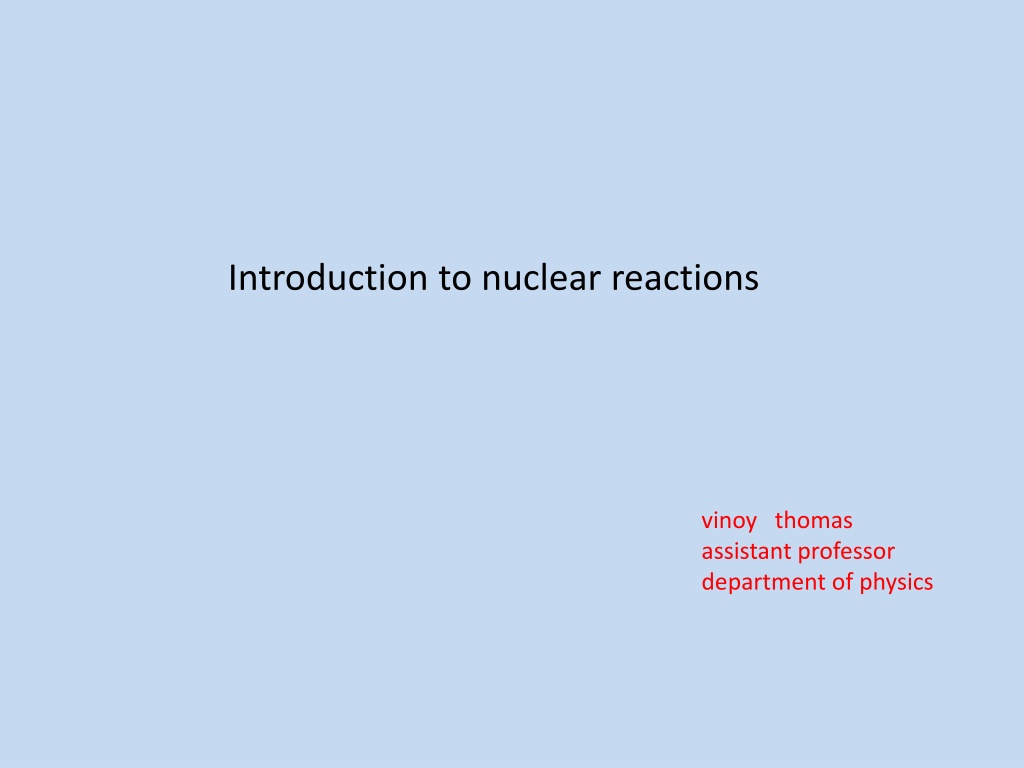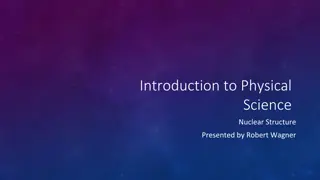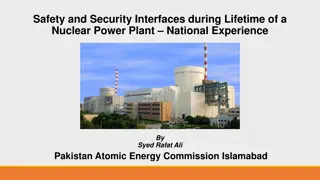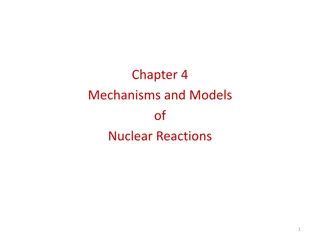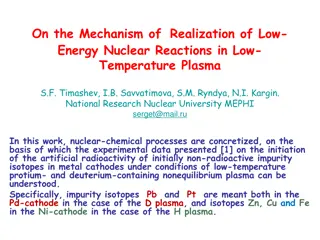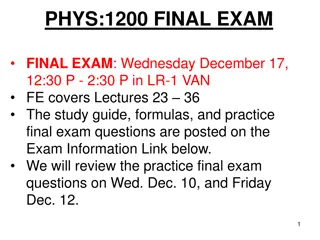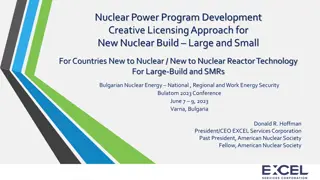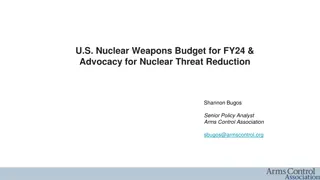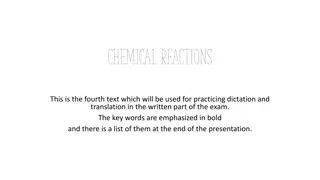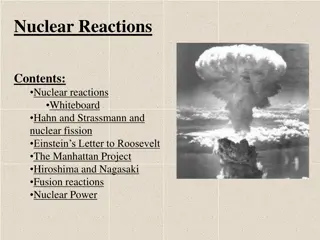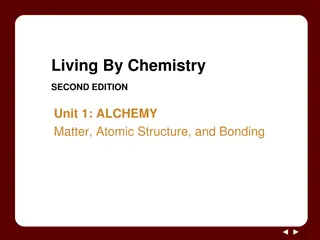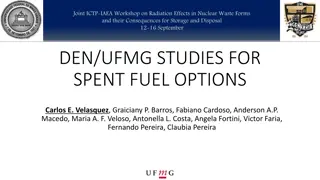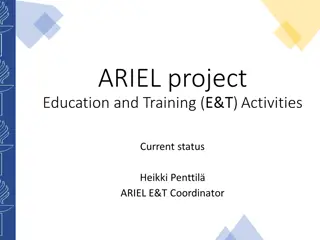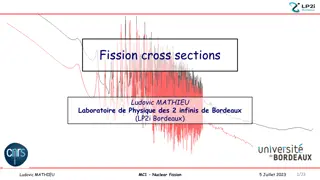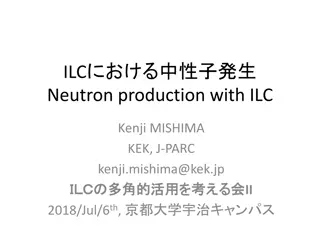Nuclear Reactions: A Comprehensive Overview
Nuclear reactions involve direct and compound scenarios, with direct reactions occurring in a short period and compound nucleus reactions leading to long-lived excited states. Different types of reactions like elastic scattering, break-up, and compound nuclear reactions are discussed, highlighting the key principles and energy variations involved in these processes.
Download Presentation

Please find below an Image/Link to download the presentation.
The content on the website is provided AS IS for your information and personal use only. It may not be sold, licensed, or shared on other websites without obtaining consent from the author.If you encounter any issues during the download, it is possible that the publisher has removed the file from their server.
You are allowed to download the files provided on this website for personal or commercial use, subject to the condition that they are used lawfully. All files are the property of their respective owners.
The content on the website is provided AS IS for your information and personal use only. It may not be sold, licensed, or shared on other websites without obtaining consent from the author.
E N D
Presentation Transcript
Introduction to nuclear reactions vinoy thomas assistant professor department of physics
Nuclear Reactions Basic Classification There are two extreme scenarios for nuclear reactions direct nuclear reactions. projectile and a target nucleus are within the range of nuclear forces for the very short time allows for an interaction of a single nucleon only. compound nucleus reactions large number of interactions between nucleons.
Direct Nuclear Reactions occur in a time comparable to the time of transit of an incident particle interaction of a single nucleon occur at high energy productsare not distributed isotropically in angle The cross-sections for direct reactions vary smoothly and slowly with energy
Types of direct reactions Elastic scattering in which a passing particle and a targes stay in their ground states. Inelastic scattering in which a passing particle changes its energy state. For example the (p, p ) reaction Transfer reactions in which one or more nucleons are transferred to the othes nucleus. Stripping reaction in which one or more nucleons are transferred to a target nucleus from passing particle. Pick-up reaction in which one or more nucleons are transferred from a target nucleus to a passing particle.
Break-up reaction in which a breakup of a projectile into two or more fragments occurs. Knock-out reaction in which a single nucleon or a light cluster is removed from the projectile by a collision with the target.
Compound Nuclear reaction incident particle and the target nucleus become indistinguishable after the collision and together constitute the particular excited state of nucleus compound system is a relatively long-lived intermediate state of particle-target composite compound system is a relatively long-lived intermediate state mode of decay of compound nucleus does not depend on the way the compound nucleus is formed
Conservation Laws in Nuclear Reactions Conservation of nucleons Conservation of charge Conservation of momentum Conservation of energy
Q-value of nuclear reactions The energetics of nuclear reactions is determined by the Q-value of that reaction. The Q-value of the reaction is defined as the difference between the sum of the masses of the initial reactants and the sum of the masses of the final products, in energy units (usually in MeV). The Q-value of this reaction is given by: Q = [ma+ mA (mb+ mB)]c2 which is the same as the excess kinetic energy of the final products: Q = Tfinal Tinitial = Tb+ TB (Ta+ TA)
For reactions in which there is an increase in the kinetic energy of the products Q is positive. The positive Q reactions are said to be exothermic (or exergic). There is a net release of energy, since the kinetic energy of the final state is greater than the kinetic energy of the initial state. For reactions in which there is a decrease in the kinetic energy of the products Q is negative. The negative Q reactions are said to be endothermic (or endoergic) and they require a net energy input.
